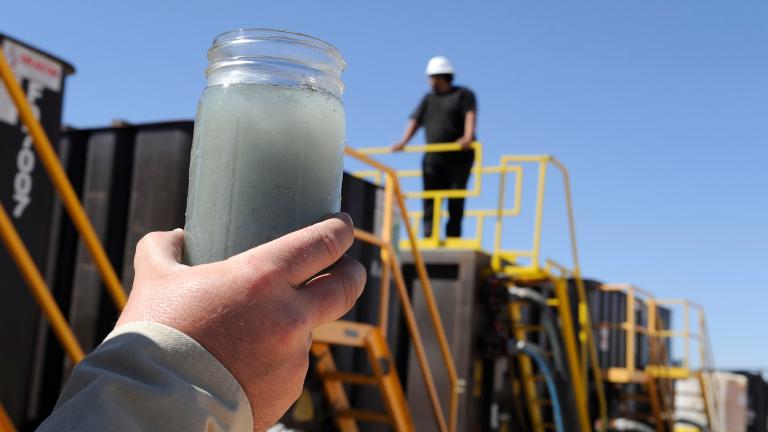World leaders aren’t doing enough to address pollution at its source, leaving nearly 9 million people each year to die from its effects.
That’s the message delivered on Tuesday by public health experts from the Lancet Commission on Pollution and Health, a high-profile panel of scientific experts. In a new progress update, they report that death and disease rates from pollution are as high as they’ve ever been, causing 1 in 6 deaths worldwide and disproportionately affecting people in the developing world, also sometimes known as the Global South.
“There’s not a whole lot being done about it,” said Rachael Kupka, executive director of the Global Alliance on Health and Pollution and one of the report’s coauthors. She called for coordinated action from world governments and international agencies to mitigate pollution while also addressing other threats such as climate change and biodiversity loss.
The progress update builds on previous data compiled by the Lancet commission, which showed that pollution was responsible for 9 million deaths in 2015. Now, the researchers say that number has remained virtually unchanged. Despite a decrease in deaths from types of pollution associated with extreme poverty — such as household air and water pollution — these modest gains have been more than offset by increased deaths from other forms of pollution such as airborne particulate matter.
Overall, deaths from these so-called “modern” forms of pollution — pollution that’s associated with industrialization, the use of fossil fuels, and chemical exposure — have increased by more than 66 percent over the past two decades.
Air pollution is by far the deadliest culprit, causing more than 6.5 million deaths per year, followed by water pollution, lead, and other hazards. Some of the primary sources of air pollution include tiny particles known as PM 2.5, named for their diameter of just 2.5 micrometers — about 30 times smaller than the width of a human hair. These particles, which are produced from wildfires and the burning of fossil fuels, can lodge themselves deep into people’s lungs and cause respiratory, cardiovascular, and neurological damage. According to a 2021 estimate from researchers from the University of Chicago, a failure to meet international guidelines for PM 2.5 exposure takes away roughly 21 billion years of life expectancy every year.
Other problematic sources of air pollution include methane, which produces hazardous ground-level ozone that is linked to health conditions such as lung damage, chest pain, and exacerbated respiratory diseases. Notably, both methane and many major forms of PM 2.5 such as “black carbon” — aka soot — are also big contributors to climate change, highlighting the opportunity for action that can simultaneously slow slowing global warming and improve public health.
Chemical pollution is another growing concern identified by the Lancet commission — especially in low- and middle-income countries, where approximately two-thirds of current chemical production is located. Lead, for example — which comes from sources like e-waste, paint, and contaminated spices — continues to claim nearly 1 million lives each year and poisons 800 million children with dangerous blood lead concentrations.
Philip Landrigan, director of the Global Public Health Program and Global Pollution Observatory at Boston College and one of the report’s coauthors, said the commission’s estimate that chemical pollution causes 1.8 million deaths per year is “a serious undercount.” Deaths from common toxicants such as arsenic, chromium, cadmium, and pesticides are excluded, as are the potential impacts from thousands of other human-made chemicals that have never been tested for toxicity.
“I can tell you that the real number is definitely higher,” he said.
Meanwhile, the Lancet commission reports that countries have made “strikingly little effort” since 2017 to reduce their populations’ exposure to hazardous pollution. Some of the biggest global health projects tend to be oriented toward infectious diseases, leaving pollution mitigation up to less powerful departments of the environment.
That isn’t to say that there’s been no movement in the fight against pollution. Over the past few years, national programs in China, India, and elsewhere have helped clear up smoggy skies and reduced deaths from indoor air pollution. International organizations are tightening pollution standards, too — like the World Health Organization, which in September halved its guideline for annual PM 2.5 exposure from 10 micrograms per square meter to just 5.
Still, Kupka said that world governments must do much more to alleviate the burden of pollution on global communities, especially those in the developing world. Once countries recognize pollution as an urgent priority, she said, they should quickly begin implementing programs and policies to address it, such as an auto emissions standard or a ban on the use of lead-based colorants from spices. Crucially, these efforts should not only seek to manage existing pollution, but stop it from happening in the first place.
“We’re really, really emphasizing the need to stop pollution at the source,” Kupka said.



